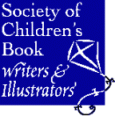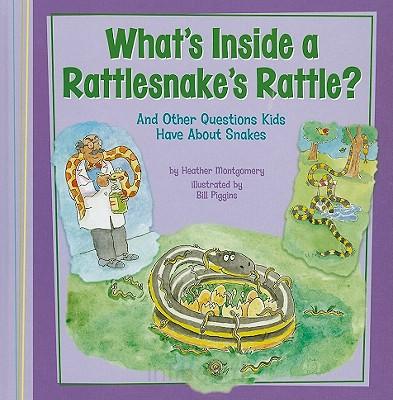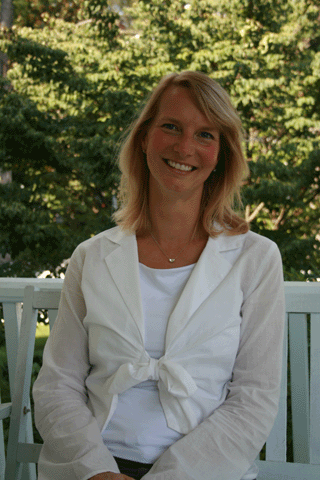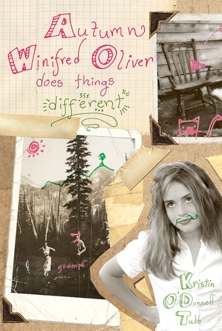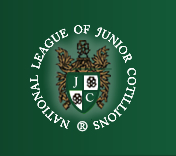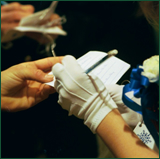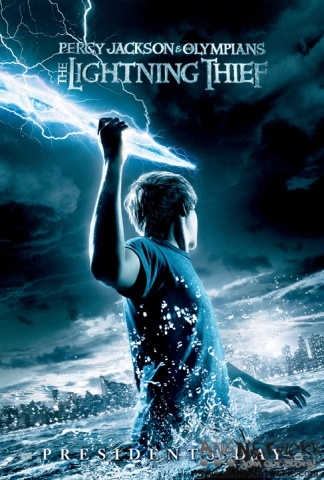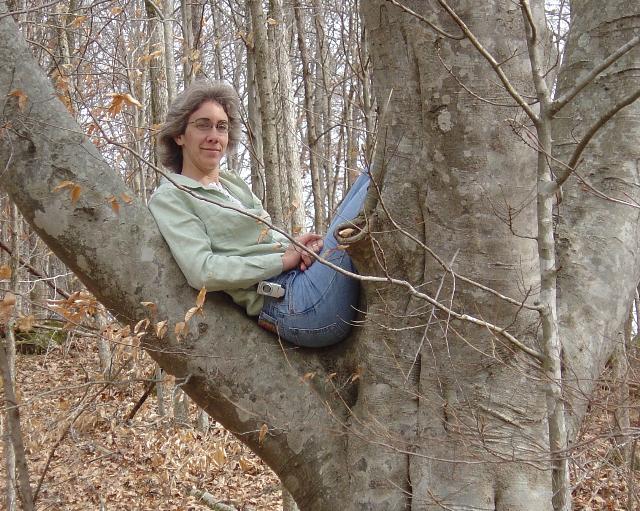
We have a guest today who’s an expert on teaching kids about the great outdoors. I had the privilege of meeting Heather Montgomery at an SCBWI conference a couple of years ago, and her enthusiasm for science writing is contagious!
She’s the author of several fascinating books, including How is Soil Made? Mummies: Truth and Rumors, How To Survive An Earthquake, What’s Inside a Rattlesnake’s Rattle?: And Other Questions Kids Have About Snakes, and Why Do My Teeth Fall Out?: And Other Questions Kids Have About the Human Body.
Besides books, we often see Heather Montgomery’s byline in Highlights magazine, which our whole family loves to read!
Hello, Heather. You look comfortable up there in that tree. How did you become interested in nature writing?
I love nature and teaching about it. One day I realized that I could teach many more people through writing than I could ever hope to reach in person, so I decided to try my hand at nature writing for children.
Were you inspired by nature as a child? What were your favorite activities to do outdoors growing up?
I’ve always loved the outdoors. I grew up in a rural area where we spent our days running through the woods, playing tag in the yard, and pulling oysters out of the Chesapeake Bay.
Our family vacations were to state and national parks, and I attribute my love of learning in the outdoors to those early experiences with awe-inspiring nature rangers.
As a child I was scared of spiders and was not thrilled about some of the subjects that now amaze me, but I’ve learned that the more you learn about something, the less you fear it. Now I regularly hold spiders in my hand to teach children about them. I’ve always been curious about science and how things in nature work.

Yikes! I’m not sure I could hold a spider in my hand. What do you most enjoy now?
I haven’t outgrown my childhood pleasures. I particularly like to climb trees, wade in clear streams, watch bugs, and garden. I also love just about any sport or game played outdoors. One of my greatest pleasures is taking student groups outside to nature journal and discover the excitement of science.
Sounds like you’ve chosen a career you love! Why do you think it’s important for today’s parents and kids to get outside and explore the great outdoors?
The outdoor environment is perfect for stimulating a child’s curiosity. No matter what their interest — science, art, music, sports — they can find nature inspiring and develop life-long healthy hobbies.
Humans like to learn, and being in a natural environment where learning comes easily helps children realize that learning is fun. Free play in the outdoors is critical to the development of curiosity, physical health, and a sense of place.
I agree. Kids learn more from experience than from watching it on a flat screen. I see you’ve written a number of books on a wide range of subjects, from earthquakes to soil to rattlesnakes, and more! How do you choose to write on a topic?
When a potential topic comes to my attention, my first thought is “How interesting is it to me?” Is it something I might want to spend a few years learning and writing about? If I’m not passionate about it, then it won’t make a good topic for a kids book or article.
The second “test” I give it is marketability. Is there a publishing house out there which might be interested in it? Answering this question requires a good bit of market research.
Thirdly, I consider the practicalities. Is there enough material out there on the topic, do I have good access to experts on the subject, etc.?
Most of the books I’ve written (and all that I’ve published so far) have been on assignment. Educational publishers or book packagers have assigned me the project based on my experience and their needs.
What has been one of your most intriguing assignments?
One of the most interesting bits of field research I’ve been able to do was at Mammoth Cave. I joined a group of middle school students who were trying to figure out why one of the rivers in the cave runs backwards sometimes. We crawled through the cave, saw mummified bats, pulled test equipment from a river so far below us that we could not even see it and found a blind cave crawfish. I’m working to turn that experience into a magazine article.
That sounds incredible. I hope we’ll be able to read about it!
I also enjoyed the utterly gross experience of dissecting a rattlesnake. When I was writing my upcoming book on rattlesnakes, I happened to find a dead rattler along the road. Always one for hands-on learning, I decided to dissect it (Warning: Do not try this at home).
Wow! Did you feel like you were in any danger doing this?
Not at the time, but later when I learned that a rattler’s fangs can strike on reflex even after they are dead, I wondered if it had been such a good idea.
From that dissection, I did learn that most rattlers have only one lung — a neat anatomy note that I use during my school visits to help students think critically about how a body is designed.
Do you take your own photographs for assignments? Do you think it helps to sell an article or book idea if a writer includes his or her own photographs?
I do take photos for my projects, but mostly for my own reference and use. They, along with my nature journal, help immensely when I’m working on adding vivid detail to a manuscript. Some editors, like those at Highlights require that you submit photos to support the article, but most prefer to use professional photographers or stock photos.
How did you get started in writing for Highlights magazine? What do you recommend for writers who’d like to break into this publication?
I was fortunate enough to attend the “Writing from Nature” workshop put on by the Highlights Foundation. During an amazing five days I learned boatloads of information about writing for kids and met the science editor for Highlights. A tip I learned at the workshop was that every piece in the magazine is written by freelancers. That includes even the three-sentence “Science Corner” pieces and the short puzzles. Those are a great way to get a foot in the door.
Can you tell us about your involvement with the SCBWI (Society of Children’s Book Writers & Illustrators)? Do you think this organization is helpful for people interested in being published in the field of children’s literature?
Joining and becoming actively involved with the SCBWI has been the single step that has most helped my career. Through the organization, I’ve joined a critique group which has proven instrumental in improving my writing and keeping me producing work.
I volunteered to help and have become the Assistant Regional Advisor for Southern Breeze (the Alabama, Georgia and Mississippi region). This involvement has exposed me to numerous talented members who have all willingly shared their knowledge, helping me each step of the way. The SCBWI publications have been an invaluable resource as I have navigated the stormy seas of the marketplace.
Would you recommend SCBWI conferences? Is it a good idea to go if you’re just getting started in writing for kids?
Absolutely! Through SCBWI international and regional conferences I have learned about the business end of being an author, had the pleasure of meeting editors, and forced my shy self into networking. For people new to the industry, in addition to finding a supportive critique group, I would recommend reading the publications provided by the SCBWI.
Then, I’d recommend attending a regional conference or event which focuses on craft. After you have some experience, try to attend conferences and events designed to help market your work. The professional critiques available at these conferences are a good step once your work has been critiqued by peers and revised several times.
This fall I’ll be presenting at both the Carolina’s and the Southern Breeze regional SCBWI conferences. I hope to see you there!
That’s great! I’m hoping to go to one of these SCBWI conferences. Are there any other conferences you’d recommend to aspiring writers?
I highly recommend any of the Highlights Foundation Workshops. The folks at Highlights genuinely care about your progress as a writer and about providing the best literature for children. Plus, their food is scrumptious. 🙂
Mmmm…All the more reason to go! Can you tell us what your latest writing project is these days?
I’m working on numerous projects on topics ranging from hiccups to parasitic wasps and even a work of fiction. In the near future, I’ll have two more snake books published. One is on garter snakes, and the other on rattlesnakes. Did you know that these snakes give birth to live young instead of laying eggs? Nature works in mysterious ways — ways that scientists get to study and figure out!
Cool! You make it all sound like so much fun. Thank you for visiting here with us!
My pleasure.
You can learn more about Heather Montgomery at her author website, as well as at her award-winning consulting business, DEEP: DragonFly Environmental Education Programs. Be sure to scroll down to read Heather’s article, Most Dedicated Mom. I think you’ll be quite surprised!



